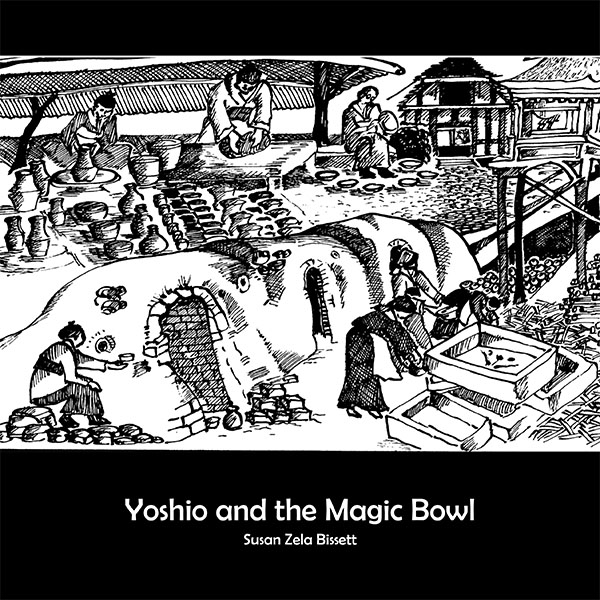The story of Yoshio and the Magic Bowl began back in the year 2000, when we hosted our first Japanese exchange student, Gakuji, in a household that already included two teenage boys.
Our school, Two Mile State School, made a big effort to welcome Gakuji and his friends to Australia. The class 5-6 that I was teaching made 1000 paper cranes based on the story “Sadako and the Thousand Paper Cranes” by Eleanor Coerr, about a young girl dying from radiation exposure after the dropping of nuclear bombs on Hiroshima and Nagasaki at the close of World War 2. The exchange visits were very much aimed at international understanding and peace and the children responded magnificently to the occasion.
In the aftermath, I began composing the story of Yoshio and his trip back through time, informed by my personal history as a potter. I was trained at Seven Hills College of Art in Brisbane, where potters including Carl McConnell, Robert Forster and Kevin Grealy all influenced my ideas and practice.
My young mind was inspired by the story of two potters from different traditions who became friends and re-invigorated studio pottery all over the world – Bernard Leach and Shoji Hamada.
In 1994, I was fortunate to visit Hamada’s hometown of Mashiko and see the great anagama kilns preserved there. I drew heavily on this experience to set the scene for Yoshio’s visits to the street of the potters.

Where to buy
You can purchase the book at your preferred shop below*
Amazon
Barnes and Noble
The Book Depository
Angus & Robertson
Fishpond
Booktopia
*If you would like to order multiple copies of Yoshio and the Magic Bowl, get in contact with me here for a group discount.
For teachers
With the introduction of the Australian Curriculum, as educators we were asked to broaden our cultural focus to be more inclusive of Asia and the Pacific. At this time, I pulled out my hand bound copy of the story. It filled a need for resources which:
- Include the culture and history of Japan, one of the Asian nations with strongest ties to Australia.
- Contain a moral code or ethical message.
- Cater to the reading interests of students in late primary and early secondary settings, with adventure, historical content and a touch of the supernatural.
In the secondary setting, as well as for English, Yoshio is also useful for teachers of LOTE in schools which offer Japanese as their second language.
Click here to find a worksheet for use with Yoshio and the Magic Bowl in the classroom.